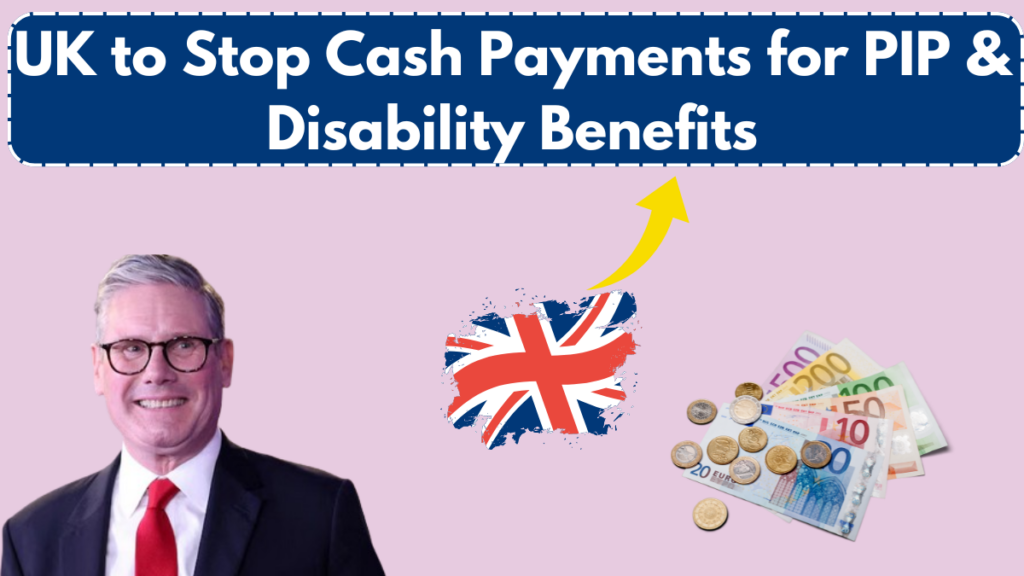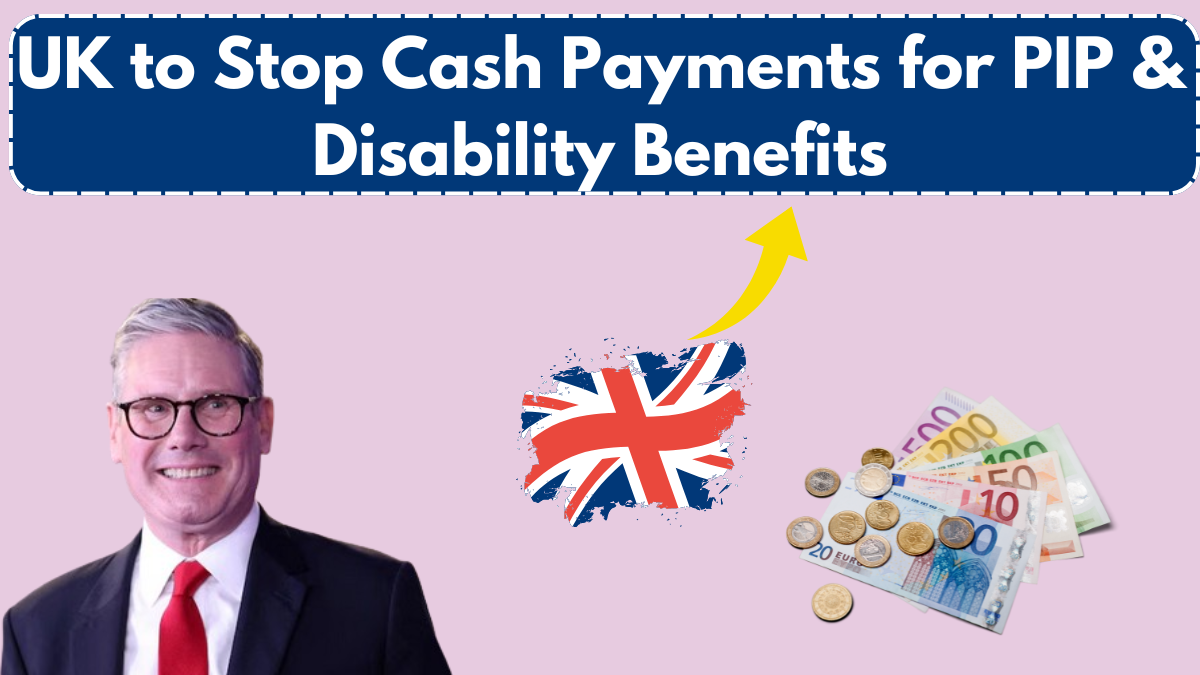The UK government has announced a major shift in the way Personal Independence Payment (PIP) and disability benefits will be distributed. Instead of direct cash payments, eligible individuals will receive PIP vouchers. This change aims to enhance the efficiency of the welfare system, reduce fraudulent claims, and encourage individuals with milder health conditions to engage in the workforce. The move has sparked discussions about its potential impact on beneficiaries and the overall welfare system.

Understanding PIP and Its Role
PIP is a financial aid program designed to support individuals with long-term health conditions or disabilities. These payments help recipients cover essential medical and daily living expenses, ensuring they receive the necessary support to lead independent lives.
The number of PIP claimants has significantly increased in recent years, with many cases involving anxiety and depression. This rise has raised concerns about the sustainability of the system and whether funds are reaching the most deserving individuals. To address these concerns, the Department for Work and Pensions (DWP) is implementing structural changes, replacing cash payments with PIP vouchers.
Why Is the UK Replacing Cash Payments with Vouchers?
The decision to transition from cash payments to vouchers stems from multiple factors, including:
- Preventing Misuse and Fraud: Direct cash payments are susceptible to misuse and fraud. Vouchers ensure that financial assistance is used strictly for essential goods and services.
- Encouraging Workforce Participation: Individuals with milder health conditions are encouraged to engage in work, fostering a sense of independence and financial stability.
- Better Allocation of Resources: The voucher system allows for more effective distribution of funds, ensuring they are used for intended purposes.
- Reducing Theft and Exploitation: Vouchers minimize the risks associated with cash transactions, such as theft or coercion by third parties.
What Will Replace Cash Payments?
Currently, around 3.3 million citizens receive PIP benefits. The shift to vouchers is expected to redefine how beneficiaries access their financial aid. The PIP voucher system will work as follows:
- Vouchers Instead of Direct Cash Deposits: Instead of receiving a fixed sum (previously up to £570 per month), beneficiaries will be issued vouchers.
- Wide Usability: The vouchers can be redeemed for essential goods, medical supplies, and services, even in professional workspaces.
- Regulated Spending: This ensures that funds are used only for disability-related needs, preventing potential misuse.
Key Benefits of PIP Vouchers
The introduction of PIP vouchers offers several advantages for both beneficiaries and the government:
| Benefit | Explanation |
|---|---|
| Prevents Fraud | Ensures that benefits are used solely for disability-related expenses. |
| Easier Financial Management | Vouchers streamline the distribution of aid, reducing administrative burdens. |
| Improves Accessibility | Disabled individuals can use vouchers for direct payments at participating stores. |
| Encourages Independence | Helps recipients access resources that enhance their self-sufficiency. |
| Reduces Theft Risks | Eliminates concerns related to cash-based financial exploitation. |
Eligibility for PIP Vouchers
With the introduction of vouchers, eligibility criteria have also been updated. To qualify, individuals must:
- Have a long-term medical condition that significantly impacts daily living and mobility.
- Demonstrate that their health condition requires additional financial support.
- Provide proof of residence in the UK for at least three years.
Potential Challenges and Concerns
While the transition to PIP vouchers has clear benefits, there are also concerns that need to be addressed:
- Limited Flexibility: Unlike cash, vouchers restrict spending to specific products and services.
- Potential Social Stigma: Some beneficiaries may feel labeled when using vouchers instead of cash.
- Implementation Timeline: The government has outlined a phased implementation plan, which could create temporary confusion among recipients.
The Government’s Plan for Implementation
The UK government has introduced a green paper detailing the plan and timeline for rolling out PIP vouchers. The key aspects include:
- Gradual implementation from 2023 to 2028.
- Periodic assessments to address any concerns raised by beneficiaries.
- Continuous monitoring to evaluate the effectiveness of the voucher system.
Conclusion
The shift from cash payments to PIP vouchers marks a significant change in the UK’s welfare system. While it aims to improve fund allocation, encourage workforce participation, and prevent fraud, it also raises concerns about flexibility and social perceptions. The government’s phased approach ensures that recipients will have time to adapt to the new system. It remains crucial for authorities to address potential challenges and ensure that all disabled individuals receive the support they need to maintain their quality of life.
Frequently Asked Questions (FAQs)
1. When will PIP vouchers fully replace cash payments?
The transition will take place gradually, with full implementation expected by 2028.
2. Can PIP vouchers be used for all expenses?
No, vouchers are intended for essential purchases, including medical supplies, assistive devices, and daily necessities.
3. Will all PIP recipients receive vouchers instead of cash?
Only individuals with milder health conditions who can engage in limited work will be shifted to the voucher system.
4. How will this change impact individuals with severe disabilities?
Individuals with significant disabilities will continue receiving the necessary support without being required to transition to vouchers.
5. What should beneficiaries do if they face difficulties using vouchers?
The government will provide guidance and support for beneficiaries to ensure smooth usage of the vouchers.
Click here to learn more.
Sachin is a dedicated writer specializing in education, career, and recruitment topics, delivering clear and actionable insights to empower readers.
